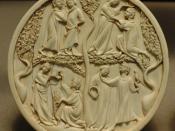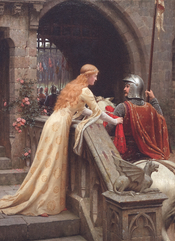This is an essay for my Women's History in Medieval Europe sophomore-level course. It discusses the effect of troubadours and courtly love practices on women of the High Middle Ages. Women were both empowered by these practices and also were made vulnerable.
References to texts used in the course are made in parantheticals- not necessary to understanding the essay.
Love overcomes both great and small,
Love rules, for Love is lord of all.
"Fealty to Venus" by an unknown Goliardic poet
Christine de Pizan was partially right when she said that women who allowed themselves to be wooed by lovers put themselves in a vulnerable position, but that is only half of the story. Troubadour love poetry and the practice of courtly love empowered women to a certain extent. The poetry of the Goliards and the court of Eleanor of Aquitaine are two very different groups of people and yet they praised women and allowed them power over men's hearts (and loins).
The poetry of Bernart de Ventadorn both praised and despised women for their beauty and power. Courtly love gave birth to chivalry but it also gave birth to the tradition of putting women on an inaccessible pedestal that they would perch on, unable to move, for centuries to come. Anderson and Zinsser see the positive and negative aspects of courtly love and much information can be drawn from them as well as troubadours of the time.
There are many ways in which courtly love allowed women a modicum of power in a world where otherwise they were supposed to be dependent, obedient and chaste wives and daughters. Troubadours waxed poetic about women's beauty saying, "no one who looked at her / was not warmed with joy," and, "...her eyes bright, her face white, / a beautiful mouth, a...


